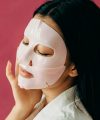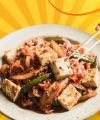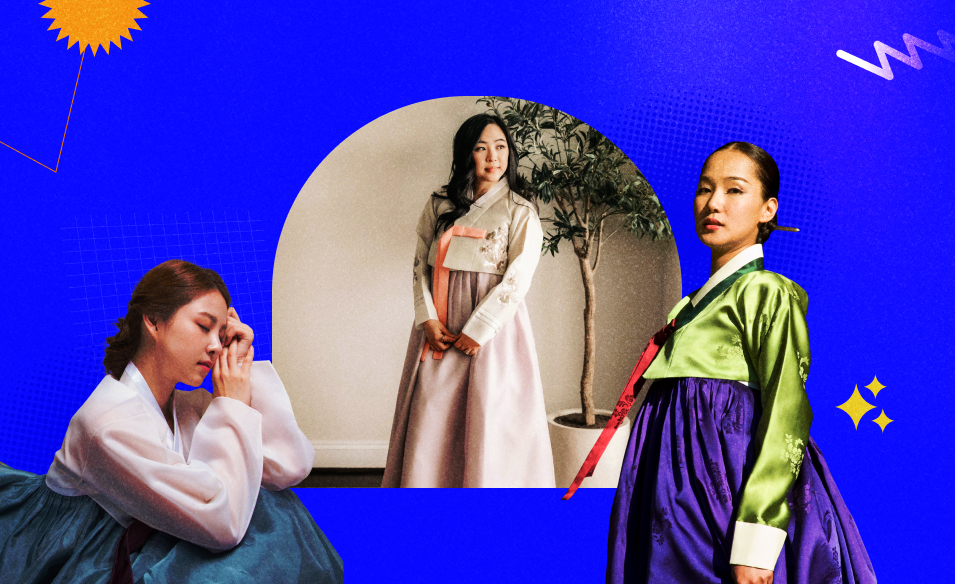Table Of Content
- What Defines Traditional Hanbok?
- The Modern Hanbok: A Reinvention for Everyday Life
- The Modern Hanbok: Where Streetwear Meets Heritage
- The K-Pop Effect: Idols Making Modern Hanbok Global
- 1. Blackpink’s “How You Like That”
- 2. BTS and Stage Hanbok
- K-Dramas and Hanbok Beyond History
- How Are The Designers Leading the Hanbok Renaissance?
- How Can You Style Modern Hanbok in Daily Life?
- Why Modern Hanbok Resonates with Gen Z?
- Is Modern Hanbok Moving Towards A Bright Future?
- The Modern Hanbok Is Nothing Less Than A Living Legacy
The Hanbok in question here, is South Korea’s traditional attire. Of course my Korean friends will agree, it is more than just clothing.
It it is history stitched into fabric.
It has a sort of flowing skirt, which makes it look like Royalty. Additionally, you can get it in vibrant colors, and graceful silhouettes.
And guess what? The hanbok once defined daily life during the Joseon dynasty.
Today, it is making a powerful comeback. No, not as you think. Not as a relic of the past. But, as a bold, modern fashion statement.
From K-pop idols to Netflix dramas, the modern hanbok is being reinterpreted for contemporary audiences.
Designers are cutting hemlines, experimenting with fabrics, and infusing heritage into streetwear.
Well, this just proves that hanbok is not just ceremonial. It’s culture evolving with time.
What Defines Traditional Hanbok?
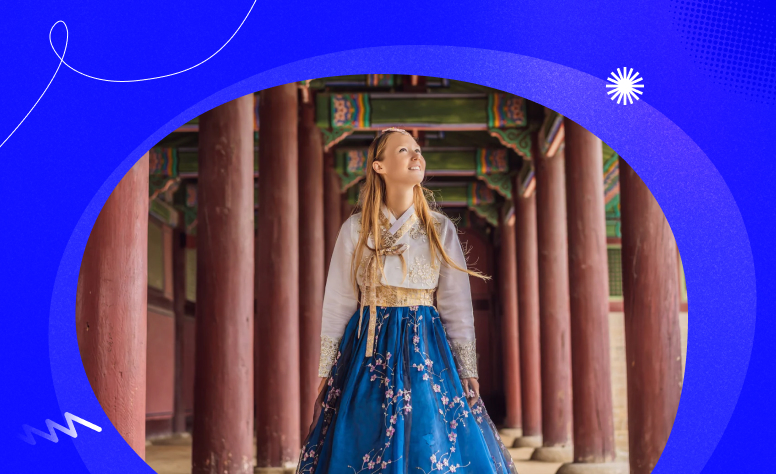
Traditional hanbok consists of two essential parts: the Jeogori (upper garment) and either the Chima (skirt) or Baji (pants).
Rich embroidery, layered fabrics, and wide sleeves balanced elegance and modesty.
Historically, colors and patterns signified social status or blessings.
Although there was a time, when people wore the hanbok as a daily wear.
But, the Modern Hanbok is transitioned into being ceremonial. This mainly happened when Western clothing became widespread in Korea.
Today, it is mostly reserved for holidays like Seollal (Lunar New Year), Chuseok (Korean Thanksgiving), and weddings.
The Modern Hanbok: A Reinvention for Everyday Life
The modern hanbok was born when designers began seeking ways to keep the garment relevant in daily life.
Kim Young-jin of Tchai Kim reinterpreted men’s cheollik coats into one-piece dresses in the 2010s, pairing them with wrap skirts for comfort and elegance (Seoul Space).
Similarly, Hwang Yi-seul of Leesle created what she calls “neo-hanbok,” introducing denim Jeogori jackets, hooded tops, and casual cotton skirts.
In her Vogue interview, she explained that instead of showcasing hanbok as theatrical or extravagant, her goal was to design pieces that “blend in naturally with everyday clothing.”
She aimed at making it accessible to university students who now wear hanbok-inspired looks several times a week.
The Modern Hanbok: Where Streetwear Meets Heritage
In Seoul’s youth districts like Hongdae, hanbok is merging with streetwear.
So over there, people wear oversized Jeogori paired with sneakers. Also, cropped jackets over cargo pants are a huge streetwear look.
Additionally, some of them paired bomber jackets with hanbok ties and this look is my personal favorite.
No wonder such fashion statements are becoming popular. This fusion allows young people to wear hanbok not as costume but as identity.
The K-Pop Effect: Idols Making Modern Hanbok Global
Although it’s not really huge yet, still I count these two instances as game changers in the evolution of the Modern Hanbok.
After all, we have two biggest Kpop groups of all time channelizing the aura of the modernized version of their very tradition.
1. Blackpink’s “How You Like That”
In 2020, Blackpink stunned global audiences when they appeared in hanbok during their How You Like That music video.
The outfits were created by Danha Seoul. She is one such designer who places her commitment to sustainable and modern hanbok.
In an interview with The Week, Danha explained, “Hanbok became a ‘global keyword’ since Blackpink’s music video. I want this to be a persistent phenomenon, not a momentary trend.”
Blackpink’s stylist Balko later revealed in Rolling Stone India that it was Jennie herself who first suggested incorporating hanbok into the video.
Balko said, “I kept the core spirit of hanbok intact, but fused it with elements that would work for performance.”
The outfits were deliberately shortened and restructured so the members could dance freely (Koreaboo).
This moment introduced modern hanbok to millions of international fans, with South China Morning Post reporting that Blackpink’s styling “drew international attention to Korean traditional clothes.”
2. BTS and Stage Hanbok
In 2018, BTS wore bold, modern hanbok designed by Baek Oak Soo during their “IDOL” stage performances.
These outfits, with their contemporary silhouettes and colorful embroidery, immediately trended worldwide.
And guys! You can start to imagine how this had been driving global searches for hanbok.
The performance helped reposition hanbok not just as heritage but as a fashion-forward statement (SCMP).
K-Dramas and Hanbok Beyond History
An iconic fashion move and the Kdramas not contributing to it? Umm sorry, we don’t do that here.
When I first watched some historical dramas like The Red Sleeve, I did see a quaint highlight traditional hanbok’s elegance.
But, the recent productions are reinterpreting it for modern audiences. Netflix’s Kingdom showcased hanbok’s practicality in a zombie-horror setting.
Consequently, dramas such as King the Land incorporated hanbok-inspired casual wear for contemporary characters.
This blending on screen reinforces hanbok’s relevance across eras.
How Are The Designers Leading the Hanbok Renaissance?
Danha Seoul: Known for eco-friendly, globally loved designs. After Blackpink wore her pieces, Danha told The Week that her mission is to make hanbok part of everyday fashion culture worldwide.
Leesle (Hwang Yi-seul): A pioneer in casual hanbok, she modernized designs with denim and minimalist cuts, telling Vogue she aims for “hanbok that feels natural on the street.”
Baek Oak Soo: Famous for extravagant stage hanbok, Baek’s work is seen on idols like BTS, bridging haute couture with heritage.
How Can You Style Modern Hanbok in Daily Life?
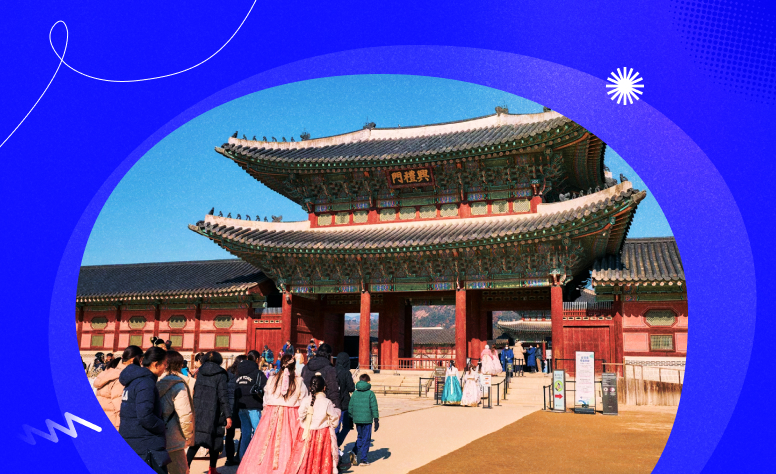
Young Koreans are increasingly wearing hanbok-inspired looks to cafés, dates, and campus events.
Tourists visiting Gyeongbokgung Palace often rent hanbok, many of which are modernized versions.
Now baby, of course this is creating huge cultural appreciation in both locals and foreigners.
Even weddings are shifting. Some couples are tailoring their wedding hanbok suits and minimalist bridal hanbok instead of Western gowns.
Why Modern Hanbok Resonates with Gen Z?
For Korea’s youth, modern hanbok is not only fashion but also cultural identity.
It reflects pride in tradition while embracing global trends. As Danha said in her interview, young people want to wear hanbok “not just on holidays, but in their daily lives,”
The sentiment echoed by Leesle’s designs emphasizes three main attributes, such as:
- Inclusivity
- Affordability
- Unisex cuts
Well, as all great things face criticism, the evolution of the Modern Hanbok did too.
Some critics argue that over-modernization risks stripping Hanbok of its meaning, turning it into a passing trend.
Designers like Danha acknowledge this balance, stressing that while modernization is important, “the hanbok’s soul must remain intact” (The Week).
Is Modern Hanbok Moving Towards A Bright Future?
In today’s world, K-pop and K-dramas dominate global entertainment.
Which is why, I believe the modern hanbok will grow as a cultural export alongside K-beauty and Korean food.
Every idol performance in modern hanbok inspires fans worldwide to search for similar outfits.
And of course, it fuels both cultural pride and fashion innovation.
The Modern Hanbok Is Nothing Less Than A Living Legacy
I believe that one of the best fashion and cultural moves is that, people no longer confine Modern hanbok to museums or holiday ceremonies.
Of course, I think it’s phenomenal that the hanbok is one of Blackpink’s stage outfits.
Also, Leesle’s campus-ready designs are also quite noteworthy.
With all these together and more, it has become a cultural movement blending tradition with modernity.
As SCMP noted, idols and designers are “bringing back hanbok as a symbol of Korean pride and creativity.”
In reimagining hanbok for the 21st century, Korea isn’t simply preserving tradition.
It is proving how heritage can thrive in the fast-moving world of global fashion.
MORE TO EXPLORE:





